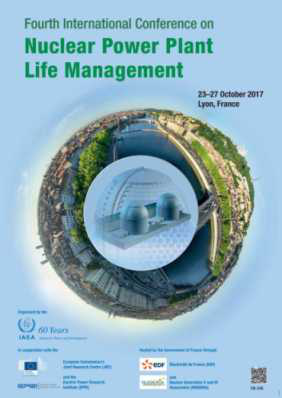Speaker
Mr
Philippe D'Haeyer
(ENGIE Electrabel)
Description
Introduction
In Belgium, the first commercial nuclear power plants were commissioned in 1975. Ever since, the nuclear safety expectations has evolved and enforced using IEAEA codes and regulations. In this process, the periodic safety review was an essential element in determining the needed upgrades for the next upcoming decade. At the time, no fixed lifetime was determined for the plants in the licensing documents.
This situation changed in 2003 when the National Government decided that commercial plants could not be operated beyond 40 years of operation. By that decision, the use of nuclear production capacity in Belgium was to phase out gradually from 2015, ending in 2025 with the decommissioning of the most recent plants of Doel 4 NPP and Tihange 3 NPP.
The Nuclear Phase Out Law stipulated that in case of economic necessity, the lifetime of plants could be extended. This option was taken in 2009 by the National Government. End 2009, the Federal Agency for Nuclear Control (FANC) issued its position paper describing the framework and planning for study and implementation of Long Term Operation for the concerned NPPs.
The LTO analysis was performed integrating the requirements of and SRS57, and by taking into consideration the methodology flowed in the framework of USNRC License Renewal (10 CFR 54).
Constraints
When ENGIE Electrabel initiated the feasibility studies for LTO of the concerned units, several constraints were to be taken into consideration:
1. No proven methodology was available for a systematic analysis of both physical and non-physical ageing analysis;
2. The ENGIE Electrabel Staff was not familiar with the specificities of the LTO approach;
3. Geographical spreading of involved teams (2 nuclear production sites, ENGIE Electrabel headquarters and Tractebel headquarters).
4. The time frame for finalizing the studies (FANC request was end 2011) was extremely short;
5. Volume of studies to prepare, including internal validation as well as continuous on-going external validation by the Regulatory Authorities
Therefore, the ENGIE Electrabel Management decoded for an integrated, corporate driven approach in which the Responsible Designer Tractebel played also an essential role. The methodology was to rely as much as possible on existing, proven processes and optimizing the benefits of multi department peer checking.
Organization and approach
Given the constraints a specific project web based (Sharepoint) tool was developed and used to support the
project processes and the collaboration between the different teams. It consisted of different collaboration
rooms according to the different areas within the LTO Programme.
Some of the most significant characteristics of this web based tool can be summarized as follows:
1. Flexible and effective management of the tool by a strong Project Support Office Team
a. Easy and flexible access management to the sharepoint tool (including meta data), creation of
libraries and lists;
b. Easy design of the tool in line with project organization and structure, including links with specific
platforms of external subcontractors;
c. Easy configuration of different levels of document confidentiality;
d. Integration with Office applications.
2. Temporary document Management System interconnecting different Management Systems of
different Organizations
a. Distinction between official, validated documents and draft or work documents
b. Respect of official validation systems of involved Organizations
c. Possibility for additional validation processes including formal and informal review by all involved
organizations;
d. Easy overview of validated documents (methodologies, analysis documents, training material, …)
e. Easy and independent KPI elaboration and follow-up for all involved organizations.
3. Management of Project support processes
a. Follow-up of analysis planning, agreed commitments and impact (risk analysis for HR, finance,
nuclear and industrial safety, complexity, impact on outage duration, …) enabling the decision
makers to have a clear overview of the progress and the potential consequences;
b. Internal and external meeting minutes (including authorities);
c. Follow-up of the status of internal and external (Regulatory Authorities) Q&A, supporting the
interaction and communication with all stakeholders.
Essential for an optimal project management is the availability of a web based tool enabling and improving
the collaboration and communication between internal and external involved organizations.
The integrated approach, the development of the unique workplace and the close monitoring of the
analysis, enabled ENGIE Electrabel to respect the Belgian Regulatory Authority expectations: the result of
the analysis was presented at the end of 2011, just 2 years after issuing the FANC Strategic Document. Not
only the timing, but also the expectations related to the methodology were integrated. During the different
SALTO missions performed by the IAEA, the coherence of the methodology and the compliance with NS-G-
2.12 and SRS57 have been confirmed.
| Country or International Organization | Belgium |
|---|
Author
Mr
Philippe D'Haeyer
(ENGIE Electrabel)

